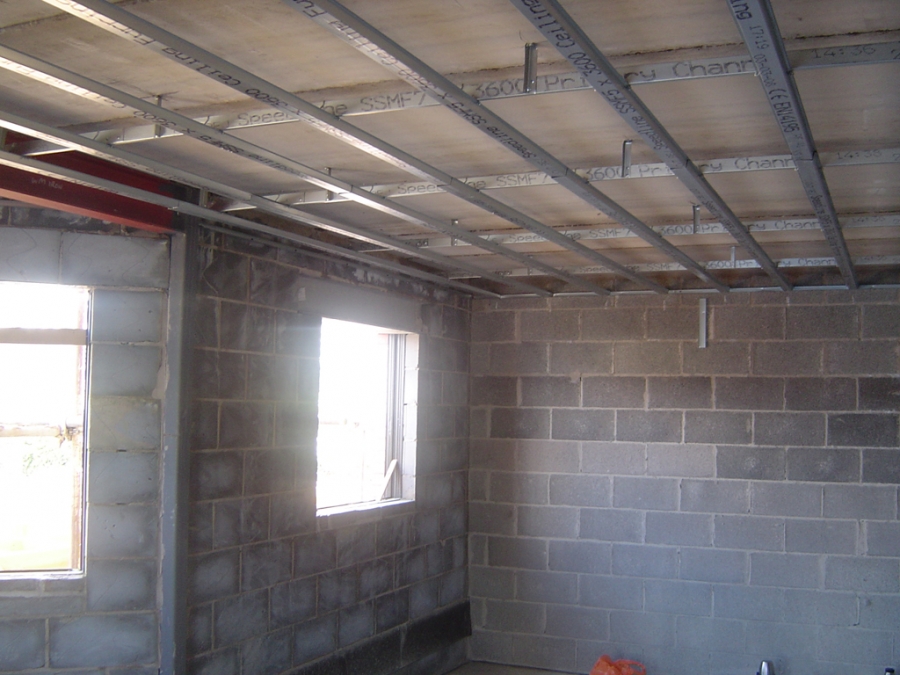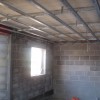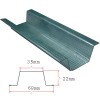Metal Furring
Metal furring refers to a non-structural metal attachment that is used to hold a finish material. In metal-framed construction, the furring pieces are long, light gauge materials of various shapes. Builders commonly use metal furring as a method of supporting one layer of material over another, or holding insulation or other construction items between materials. They also use it in order to meet fire codes or provide sound barriers.

The shape of the metal furring addresses different requirements. Because typical interior metal furring is light gauge, 25 ga. or 20 ga., the bends that create the shape also impart an amount of rigidity. Furring is generally spaced at 16" or 24" on center, and the rigidity of the shape adds to the overall integrity of the wall system.
The most widely used metal furring is a "hat"-shaped bent metal, 7/8" high and 2 1/4" wide, including the attachment flanges. This common furring is used to secure the outer layer of material where inserting screws and nails would otherwise be difficult. Hat channel is applied over another surface, such as concrete, concrete block, or a deteriorating plaster wall, making it easy to apply other surface materials.
Another widely used furring member is "Z" furring, and as its name implies, it is "Z" shaped. This product is available in various thicknesses, commonly from 1" to 3", and is designed to be attached to one surface at the bottom flange and accept an outer layer of material attached to the other flange. This product is well suited as a spacer in commercial and residential applications, as it allows an existing wall surface to be insulated or it allows horizontal electrical or plumbing items to be installed and covered with a finish material.
Furring is also used to as a method of attaching drywall to supporting members when their span distance is too wide for direct application. Bar joists, for example, do not lend themselves to the direct attachment of drywall used for a ceiling or fire rating, and typically bar joists are spaced further apart than the drywall can span. Hat channel or Z furring can be attached to the bottom of the bar joist at 16" or 24" on-center, perpendicular to the joist.
Another benefit of metal furring pertains to building codes. Many UL (Underwriters Laboratories) and city and state building codes require the use of furring strips between layers of drywall to achieve certain fire ratings. Hat channel shapes are also attached to structural columns and beams to allow the addition of an outer layer or layers of drywall or other materials in order to create required fire ratings.
The standard hat channel shape has also been modified by cutting off one flange so that the furring strip is secured on one side and "floats" on the other side. This product, referred to as a resilient channel, lessens the amount of sound transmission through a wall or ceiling assembly.
Furring lends its self to a variety of fastening methods. With metal and wood framing alike, screws are the easiest to work with. When an application is required that has the furring strip attached directly to concrete, masonry, or structural steel, more specialized fasteners are available. These include sleeve type anchors, course thread anchors, and power actuated pin fasteners. It should be noted that consulting with manufacturer's instructions or with an expert may be required with some fastening techniques.

Buildipedia Staff
The Buildipedia research and writing staff consists of dozens of experienced professionals from many sectors of the industry, including architects, designers, contractors, and engineers.
Website: buildipedia.com/


